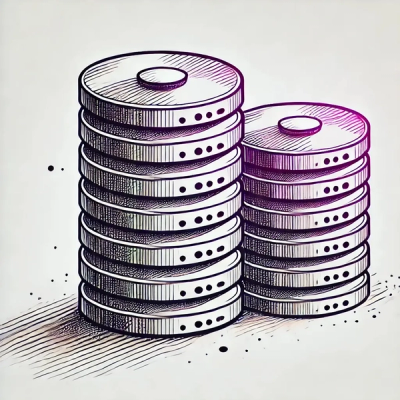
Security News
MCP Steering Committee Launches Official MCP Registry in Preview
The MCP Steering Committee has launched the official MCP Registry in preview, a central hub for discovering and publishing MCP servers.
Membrane provides an easy to use DSL for specifying validators declaratively. It's intended to be used to validate data received from external sources, such as API endpoints or config files. Use it at the edges of your process to decide what data to let in and what to keep out.
The core concept behind Membrane is the schema. A schema represents
an invariant about a piece of data (similar to a type) and is capable of
verifying whether or not a supplied datum satisfies the invariant. Schemas may
be composed to produce more expressive constructs.
Membrane provides a handful of useful schemas out of the box. You should be able to construct the majority of your schemas using only what is provided by default.
Any
The Any schema accepts all values; use it sparingly. It is synonymous to
the Object class in Ruby.
Bool
The Bool schema accepts only the values true and false.
Class
The Class schema is parameterized by an instance of
Class. It accepts any values that are instances of the supplied class.
This is verified using kind_of?.
Dictionary
The Dictionary schema is parameterized by a key schema and a
value schema. It accepts hashes whose keys and values validate against their
respective schemas.
Enum
The Enum parameterized by an arbitrary number of value schemas. It
accepts any values that are accepted by at least one of the supplied schemas.
List
The List schema is parameterized by a single element schema. It accepts
arrays whose elements are accepted by the supplied schema.
Record
The Record schema is parameterized by a set of known keys and their
respective schemas. It accepts hashes that contain all the supplied keys,
assuming the corresponding values are accepted by their respective schemas.
Regexp
The Regexp schema is parameterized by a regular expression. It accepts
strings that match the supplied regular expression.
Tuple
The Tuple schema is parameterized by a fixed number of schemas. It accepts
arrays of the same length, where each element is accepted by its associated
schema.
Value
The Value schema is parameterized by a single value. It accepts values
who are equal to the parameterizing value using ==.
Membrane schemas are typically created using a concise DSL. The aforementioned schemas are represented in the DSL as follows:
Any
The Any schema is represented by the keyword any.
Bool
The Bool schema is represented by the keyword bool.
Class
The Class schema is represented by the parameterizing instance of Class.
For example, an instance of the Class schema that validates strings would be
represented as String.
Dictionary
The Dictionary schema is represented by dict(key_schema, value_schema, where key_schema is the schema used to validate keys,
and value_schema is the schema used to validate values.
Enum
The Enum schema is represented by enum(schema1, ..., schemaN)
where schema1 through schemaN are the possible value schemas.
List
The List schema is represented by [elem_schema], where
elem_schema is the schema that all list elements must validate against.
Record
The Record schema is represented as follows:
{ "key1" => value1_schema,
optional("key2") => value2_schema,
...
}
Here key1 must be contained in the hash and the corresponding value must
be accepted by value1_schema. Note that key2 is marked as optional.
If present, its corresponding value must be accepted by value2_schema.
Regexp
The Regexp schema is represented by regexp literals. For example,
/foo|bar/ matches strings containing "foo" or "bar".
Tuple
The Tuple schema is represented as tuple(schema0, ..., schemaN),
where the Ith element of an array must be accepted by schemaI.
Value
The Value schema is represented by the value to be validated. For example,
"foo" accepts only the string "foo".
While the previous section was a bit abstract, the DSL is fairly intuitive. For example, the following creates a schema that will validate a hash where the key "ints" maps to a list of integers and the key "string" maps to a string.
schema = Membrane::SchemaParser.parse do
{ "ints" => [Integer],
"string" => String,
}
end
# Validates successfully
schema.validate({
"ints" => [1],
"string" => "hi",
})
# Fails validation. The key "string" is missing and the value for "ints"
# isn't the correct type.
schema.validate({
"ints" => "invalid",
})
This is a more complicated example that illustrate the entire DSL. Hopefully it is self-explanatory:
Membrane::SchemaParser.parse do
{ "ints" => [Integer]
"true_or_false" => bool,
"anything" => any, # You can also use Object instead.
optional("_") => any,
"one_or_two" => enum(1, 2),
"strs_to_ints" => dict(String, Integer),
"foo_prefix" => /^foo/,
"three_ints" => tuple(Integer, Integer, Integer),
}
end
Adding a new schema is trivial. Any class implementing the following "interface" can be used as a schema:
# @param [Object] The object being validated.
#
# @raise [Membrane::SchemaValidationError] Raised when a supplied object is
# invalid.
#
# @return [nil]
def validate(object)
If you wish to include your new schema as part of the DSL, you'll need to
modify membrane/schema_parser.rb and have your class inherit from Membrane::Schemas::Base
FAQs
Unknown package
We found that membrane demonstrated a not healthy version release cadence and project activity because the last version was released a year ago. It has 1 open source maintainer collaborating on the project.
Did you know?

Socket for GitHub automatically highlights issues in each pull request and monitors the health of all your open source dependencies. Discover the contents of your packages and block harmful activity before you install or update your dependencies.

Security News
The MCP Steering Committee has launched the official MCP Registry in preview, a central hub for discovering and publishing MCP servers.

Product
Socket’s new Pull Request Stories give security teams clear visibility into dependency risks and outcomes across scanned pull requests.

Research
/Security News
npm author Qix’s account was compromised, with malicious versions of popular packages like chalk-template, color-convert, and strip-ansi published.